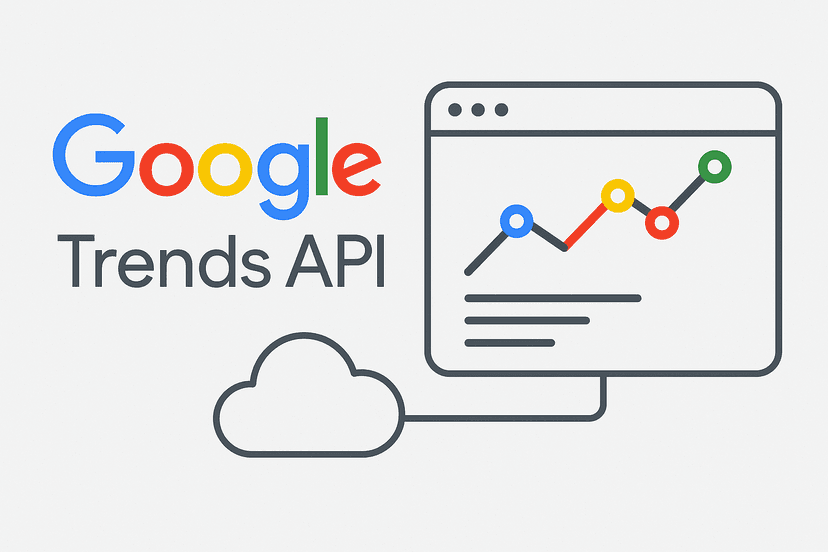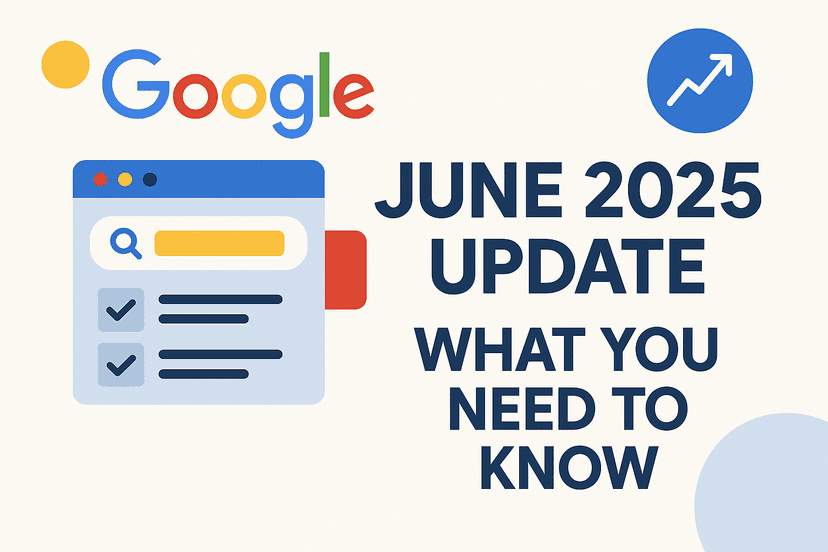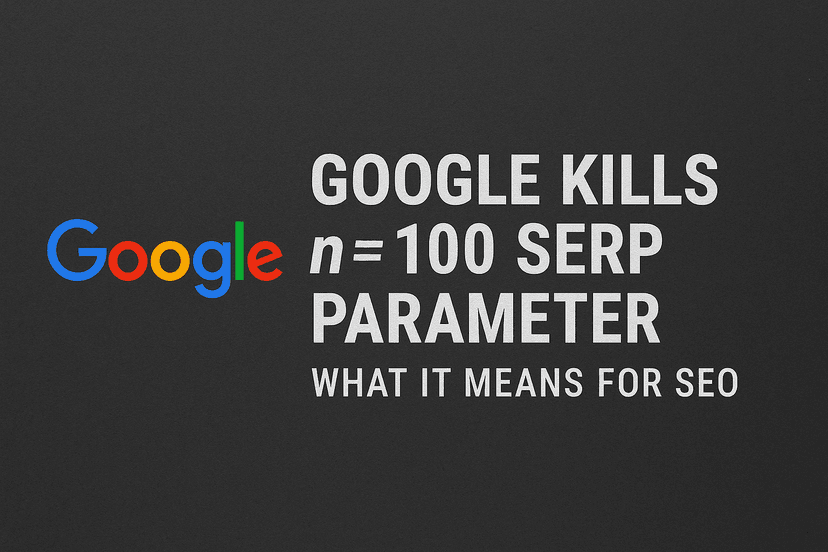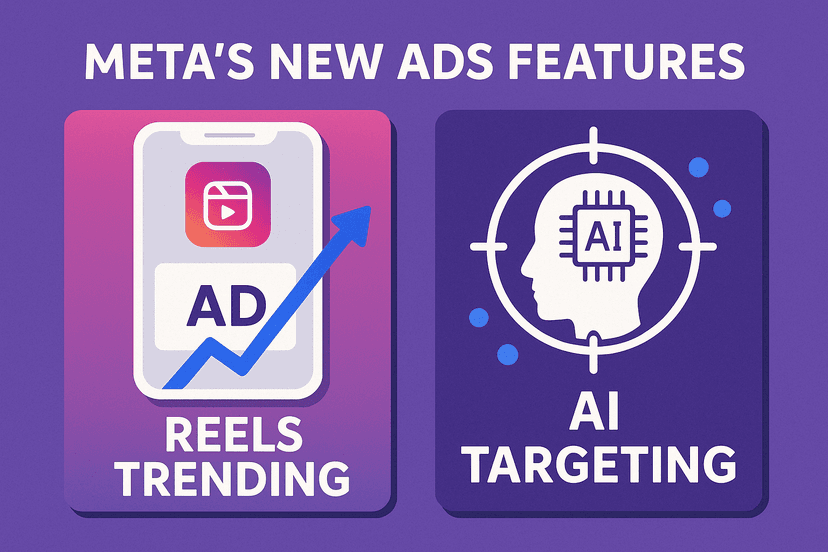Introduction
In today’s digital marketing landscape, capturing a customer’s attention once is rarely enough to secure a conversion. With the average user visiting dozens of websites daily and the typical online shopping cart abandonment rate hovering around 70%, businesses need effective strategies to re-engage potential customers. This is where remarketing and retargeting come into play—powerful techniques that can transform casual browsers into loyal customers.
The sad truth of digital advertising is that 97% of online shoppers leave a site without making a purchase. But remarketing brings them back. It’s also a powerful tool to maximize conversion rates.
Major platforms like Google Ads offer some of the most effective remarketing solutions, allowing companies to create dynamic campaigns tailored to user behavior. With tools like audience lists and cross-channel targeting capabilities, these platforms provide precise targeting, reaching users across display networks, search ads, and even video campaigns.
In this comprehensive guide, we’ll explore the nuances of remarketing and retargeting, providing you with actionable strategies to implement these techniques effectively. Whether you’re looking to recover abandoned carts, increase brand awareness, or boost overall conversions, this article will equip you with the knowledge and tools to succeed in your digital marketing efforts.
What Is Retargeting?
Retargeting is a digital marketing tactic that allows brands to serve ads tailored to potential customers based on their prior engagement with the brand. It is specifically designed to re-engage users who have visited a website but left without completing a desired action, such as making a purchase, filling out a form, or subscribing to a newsletter.
This method creates strategic touchpoints that remind prospects of products and services they expressed interest in after leaving your website. By using cookie technology, retargeting enables advertisers to display relevant ads to these visitors as they continue browsing elsewhere on the internet, significantly increasing the likelihood of conversion.
The power of retargeting lies in its ability to keep your products and services top of mind while customers navigate the web, whether they’re scrolling through social media, reading news articles, or researching competitors. In today’s competitive digital landscape, serious marketers rely on retargeting as a core strategy to engage customers and drive sales.
The financial impact of not implementing retargeting can be substantial. With abandoned carts costing ecommerce stores an estimated $18 billion in lost revenue annually, implementing effective ecommerce marketing campaigns has become essential for recapturing potential sales and maximizing return on advertising spend.
How Does Retargeting Work?
Retargeting operates through a sophisticated yet straightforward technological process. At its foundation is the retargeting pixel—a small, unobtrusive JavaScript code snippet that you embed on your website. This pixel is the cornerstone of your retargeting efforts.
When a visitor lands on your website, the retargeting pixel activates, placing a cookie in the user’s browser. Cookies are small pieces of data stored by web browsers that remember information about users who visited specific pages or ads. These digital breadcrumbs allow your marketing team to identify these users later as they browse elsewhere on the internet.
Once the cookie data is collected, your marketing platform leverages this information to serve ads to these users again, effectively reminding them of what they were interested in buying. This process creates a personalized advertising experience that targets users who have already demonstrated interest in your products or services.
The technical process works as follows:
- A user visits your website and views specific products or content
- The retargeting pixel places a cookie in their browser
- The user leaves your site without converting
- As they browse other websites within advertising networks, the cookie identifies them as a previous visitor
- Your retargeting ads appear to this user, reminding them of your products or services
- The user clicks the ad and returns to your site, increasing the chance of conversion
Retargeting significantly increases brand awareness and total conversions by displaying highly relevant, targeted ads to interested customers at the right moment in their buying journey. The strategy comes in various formats, including email, SMS (short message service), display ads, and social media ads, each with its own unique advantages and implementation methods.
Remarketing vs. Retargeting: Understanding the Difference
The terms remarketing and retargeting are frequently used interchangeably in digital marketing conversations, but they actually represent different approaches with distinct methodologies and applications.
Remarketing typically refers to the practice of collecting contact information from prospects to deliver targeted email campaigns. It focuses on re-engaging existing leads and customers through their provided contact details, particularly email addresses. For example, sending a special offer email to customers who previously purchased from your store would be considered remarketing.
Retargeting, on the other hand, specifically refers to displaying ads to prospects on other websites within an ad network after they leave your site. This method primarily relies on cookie technology to track user behavior and serve relevant ads across the internet. When someone browses your product page and later sees an ad for that same product while reading a news article, that’s retargeting in action.
The key technical distinction lies in the underlying technology: retargeting usually involves cookies and ad networks, while remarketing traditionally didn’t require cookies but instead relied on customer contact information. However, as digital marketing evolves, these lines continue to blur.
Here’s a simplified comparison:
Remarketing:
- Primarily email-based
- Uses contact information collected from users
- Focuses on re-engaging previous customers or leads
- Typically requires explicit permission (email opt-in)
- Examples: Abandoned cart emails, post-purchase follow-ups
Retargeting:
- Primarily display ad-based
- Uses cookie tracking technology
- Focuses on converting website visitors who didn’t take action
- Works through advertising networks and platforms
- Examples: Banner ads showing products you viewed, social media ads featuring items from your browsing history
While these distinctions exist, many marketers now use both techniques in complementary ways to create comprehensive re-engagement strategies that maximize conversion opportunities through multiple channels.
Different Types of Targeting Strategies
Behavioral Targeting vs. Retargeting
Behavioral targeting is a broader digital advertising approach that allows marketers to define their target audience based on consumer actions and behavior patterns. This method analyzes a wide range of user activities, including browsing habits, purchase history, clicks, time spent on pages, and other engagement metrics to create detailed user profiles.
Retargeting is actually a specific subset of behavioral targeting because it focuses exclusively on people who have already visited a webpage or engaged with a brand in some way. While behavioral targeting might show ads to people with certain browsing patterns who have never interacted with your brand, retargeting exclusively targets those who have already demonstrated direct interest.
For instance, if someone visits a particular product page on your website, retargeting would show them an ad for that same product when they visit other sites. Behavioral targeting, meanwhile, might show similar product ads to someone who has never visited your site but has browsed related products on other websites.
The primary difference lies in the scope: behavioral targeting casts a wider net based on general online behavior, while retargeting focuses specifically on re-engaging users who have already shown explicit interest in your brand or products.
Contextual Targeting vs. Retargeting
Contextual targeting represents another distinct approach to digital advertising where advertisers define their target audience based on the relevance of content on the sites where ads appear. Unlike retargeting, which follows users based on their previous interactions, contextual targeting places ads based on the content environment.
While advertisers can use contextual targeting alongside retargeting efforts, they often employ it to reach new prospects who visit sites with related content—people who might be interested in your products but haven’t yet discovered your brand.
Here’s how contextual targeting works in practice:
Imagine you’re browsing an article about adopting a healthier lifestyle that explores topics like balanced diets, workout routines, and the importance of fresh, organic foods. As you read about incorporating more fruits and vegetables into your diet, you notice ads positioned alongside the content. These aren’t random—they’re carefully selected to complement what you’re reading.
You might see an ad for a local farmer’s market offering organic produce delivery services, perfectly aligning with your current interest in nutritious eating. Additionally, you might encounter ads for gym memberships, fitness apparel, or dietary supplements, all tailored to complement the wellness content you’re consuming.
This seamless integration of relevant advertisements into your browsing experience exemplifies contextual targeting. The ads appear not because of your previous browsing history but because they match the context of what you’re currently viewing. This approach enhances the user experience while allowing advertisers to reach audiences in environments where they’re already engaged with related content.
The key distinction is that contextual targeting focuses on the current content environment, while retargeting focuses on the user’s previous behavior, regardless of what content they’re currently consuming.
Types of Retargeting Campaigns
Display Ads
Display retargeting ads are perhaps the most recognizable form of retargeting. If you’ve ever browsed products on an e-commerce site, then later noticed banner ads featuring those exact items while reading news articles or watching videos, you’ve experienced display retargeting in action.
These ads typically appear as visual dynamic banners or text ads strategically placed on websites within advertising networks. What makes them particularly effective is their ability to remind shoppers of specific products they’ve shown interest in, combining targeted messaging with tailored placement.
The technology behind display retargeting allows for sophisticated customization based on user behavior. For example, if a visitor spent significant time viewing a particular product category but didn’t make a purchase, display retargeting can showcase best-selling items from that category, complete with special offers to incentivize conversion.
Display retargeting ads benefit from their visual nature, allowing brands to reinforce product imagery and maintain brand consistency across touchpoints. They’re especially effective for products with strong visual appeal and can significantly increase brand recall through repeated exposure.
Email Retargeting
Email retargeting represents a direct and personalized approach to re-engaging potential customers. Have you ever abandoned items in your online shopping cart, only to receive an email hours later reminding you that those items are still waiting for you—perhaps even mentioning that they’re selling out fast? That’s email retargeting at work.
Similar to display ads, advertisers use email retargeting to bring shoppers back to a site, encourage them to leave a review, or remind them to complete their purchase. The key difference is the channel—delivering personalized messages directly to the user’s inbox rather than displaying ads on third-party websites.
Email retargeting campaigns can be triggered by various user actions:
- Abandoned cart emails
- Browse abandonment reminders
- Product review requests after purchase
- Replenishment reminders for consumable products
- Re-engagement campaigns for inactive customers
The effectiveness of email retargeting stems from its personal nature and the ability to craft highly specific messages based on user behavior. For instance, an abandoned cart email can show the exact items left behind, offer a limited-time discount, and create urgency through scarcity messaging—all delivered at a strategic time when the prospect is most likely to convert.
Email retargeting also benefits from higher engagement rates compared to many other marketing channels. While display ads might achieve click-through rates of 0.1-0.5%, abandoned cart emails often see open rates of 40-45% and conversion rates 5-10 times higher than standard marketing emails.
Search Retargeting
Search retargeting represents a sophisticated approach that leverages users’ search behaviors to deliver highly relevant ads. This strategy uses Remarketing Lists for Search Ads (RLSAs), a powerful feature within advertising platforms like Google Ads that combines the user’s previous site activity with their search queries.
Here’s a practical example: You own a French bulldog named Piper who has specific dietary needs and requires hypoallergenic pet supplies. As you search Google for suitable products, you see an ad for grain-free kibble appearing at the top or bottom of the search results page. This precisely tailored ad appears because the pet supply company has implemented search retargeting that recognizes both your previous visits to their dog food pages and your current related search queries.
Search retargeting works through these key mechanisms:
- Creating audience lists based on previous site visitors
- Setting bid adjustments for users on these lists when they perform related searches
- Showing customized ad copy that references both their search terms and their previous interactions
This approach is particularly powerful because it targets users at the exact moment they’re actively searching for solutions, combining the high-intent nature of search with the personalization benefits of retargeting. It allows advertisers to:
- Bid more aggressively for previous visitors who are now searching with high purchase intent
- Show different ads to existing customers versus new prospects
- Tailor messaging based on which sections of the website the user has previously visited
- Target broader keywords specifically for users who have shown prior interest
The effectiveness of search retargeting stems from its ability to engage users at the perfect intersection of previous interest and current search intent, making it one of the highest-converting forms of retargeting when implemented correctly.
Social Media Retargeting
Social media platforms offer brands a direct and engaging connection to customers, and social media retargeting capitalizes on this relationship. Platforms like Instagram, Facebook, Twitter, and LinkedIn provide sophisticated retargeting capabilities that allow advertisers to reconnect with users who have previously interacted with their brand.
What makes social media retargeting particularly powerful is the native social engagement features these platforms offer. When users see retargeted ads in their social feeds, they can not only click through to complete a purchase but also share, like, comment, or save the ad content. This social dimension extends the reach of your retargeting efforts as users essentially become brand advocates through their engagement.
For example, if someone browses summer dresses on your e-commerce site but leaves without purchasing, they might later see an Instagram carousel ad featuring those exact dresses while scrolling through their feed. The ad might showcase the dresses on different models, include customer reviews, and display a limited-time discount—all formatted to look native within the Instagram experience.
Social media retargeting can be based on various user interactions:
- Website visits (specific pages or actions)
- Video views (users who watched your video content)
- Engagement with previous social posts or ads
- Customer list matching (targeting existing customers on social platforms)
- App activity (for brands with mobile applications)
The rich targeting options combined with the engaging, visual nature of social platforms make social media retargeting particularly effective for products with strong visual appeal and brands with established social presences. The ability to create lookalike audiences based on your retargeting lists further extends the value, allowing you to find new prospects who share characteristics with your most engaged site visitors.
Mobile Retargeting
As smartphone usage continues to dominate digital consumption habits, mobile retargeting has become an increasingly vital component of comprehensive retargeting strategies. Most consumers spend significant time on their mobile devices, creating abundant opportunities for brands to reconnect with potential customers through mobile-specific retargeting approaches.
Mobile retargeting can take several forms:
- In-app advertising: Targeting users within other mobile applications based on their previous interactions with your website or app
- Mobile web retargeting: Serving ads to users as they browse websites on their mobile devices
- Cross-device retargeting: Recognizing the same user across multiple devices to maintain consistent messaging
- App re-engagement campaigns: Encouraging users who have downloaded your app but aren’t active to return and engage
The effectiveness of mobile retargeting is impressive. Industry data shows that brands leveraging mobile retargeting experience a notable 120% increase in click-through rates (CTRs) compared to standard mobile advertising. This method is particularly effective for encouraging branded app installs, driving local store visits, and capturing conversions from users who primarily browse on mobile but may prefer to complete purchases on desktop.
Mobile retargeting also offers unique capabilities like geofencing, which allows brands to trigger retargeting ads when users enter specific geographic locations. For instance, a user who previously browsed running shoes on your website might receive a retargeted mobile ad when they come within proximity of your physical store location, combining their digital interest with their physical presence to create a powerful conversion opportunity.
The key to successful mobile retargeting lies in optimizing the user experience specifically for mobile devices—ensuring fast load times, simplified conversion paths, and creative formats that work well on smaller screens. When properly executed, mobile retargeting creates seamless experiences that reconnect users with your brand regardless of which device they’re currently using.
8 Steps to Create Effective Retargeting Campaigns
Step 1: Identify Your Goals
Before launching any retargeting campaign, clearly defining your objectives is essential. Retargeting serves various purposes beyond simply boosting conversions and sales, and your campaign structure should align with your specific goals.
Common retargeting campaign objectives include:
- Improving brand awareness: Keeping your brand top of mind for prospects who have shown initial interest
- Engaging existing customers: Nurturing relationships to ensure brand affinity and encourage repeat purchases
- Recovering abandoned carts: Re-engaging users who added products to their cart but didn’t complete checkout
- Encouraging email subscriptions: Converting site visitors into email subscribers for longer-term engagement
- Soliciting customer reviews: Prompting recent purchasers to leave feedback about their experience
For each objective, you’ll need to identify appropriate success metrics. While abandoned cart recovery campaigns might measure success by completed purchases, brand awareness campaigns might track engagement metrics like ad impressions, clicks, or time spent on site after ad interaction.
Your goals will dictate every subsequent decision in your campaign development process. For example, if you’re focusing on encouraging product reviews, you’ll target recent customers rather than cart abandoners, and your ad creative will emphasize the value of customer feedback rather than highlighting product features.
It’s critical to avoid using a one-size-fits-all approach to campaign goal setting. Each objective requires its own strategy, audience definition, creative approach, and success metrics. By clearly defining what you want to achieve, you create a foundation for more effective decision-making throughout the campaign development process.
Pro Tip: If you work with an advertising technology provider offering managed services, consult with them about the most appropriate campaign success metrics based on your business objectives. Many platforms can automatically optimize your campaigns toward specific goals once they’re clearly defined.
Step 2: Segment Your Audience
After establishing your goals, the next crucial step is determining precisely who you want to reach with your retargeting campaign. Effective retargeting relies on strategic audience segmentation rather than applying a uniform approach to all previous site visitors.
The last thing you want is for shoppers to see irrelevant ads or to annoy those who have already made a purchase with repetitive promotion of items they’ve just bought. Segmenting your audience into distinct groups allows for more personalized, relevant messaging that significantly improves campaign performance.
You can segment your audience based on various criteria:
- New vs. repeat customers: First-time visitors might need different messaging than returning customers
- Behavioral segments: Group users based on which pages they’ve visited, how long they spent on site, or specific actions taken
- Engagement level: Separate highly engaged visitors from those who only briefly interacted with your site
- Estimated customer lifetime value: Allocate more retargeting budget to high-value prospects
- Funnel position: Create different messaging for awareness, consideration, and decision stage visitors
- Cart status: Distinguish between users with abandoned carts and those who browsed without adding items
- Products of interest: Segment based on specific product categories or items viewed
- Previous purchase history: Tailor messaging based on past buying behavior
- Demographic factors: Segment by age, gender, location, or other relevant demographic information
- Geographic location: Create location-specific offers or messaging when appropriate
Each segment should receive tailored creative, messaging, and offers relevant to their specific situation and needs. For example, a visitor who spent time viewing a specific product category but didn’t add items to their cart might receive ads showcasing best-selling products from that category. Meanwhile, a user who abandoned their cart might see ads specifically featuring the abandoned items with a limited-time discount to encourage completion of the purchase.
Pro Tip: Many modern advertising platforms offer AI-powered audience segmentation that can automatically identify high-intent audience segments based on behavioral patterns. These tools can uncover valuable segments you might not have considered and optimize your targeting for maximum effectiveness.
Step 3: Choose Your Marketing Channels
With clear goals and segmented audiences in place, it’s time to select the channels through which you’ll deliver your retargeting campaigns. Your choice of marketing channels significantly impacts campaign reach, engagement, and overall effectiveness.
The decision should be informed by several factors:
- Budget constraints: Different channels have varying cost structures and required minimum spends
- Available creative resources: Some channels require more sophisticated creative assets than others
- Campaign objectives: Certain channels excel at specific types of goals (awareness vs. conversion)
- Audience preferences: Where your specific audience segments spend their online time
- Product characteristics: Visual products may perform better on image-heavy platforms
- Technical capabilities: Your team’s expertise with different advertising platforms
Common retargeting channels include:
- Display advertising networks: Reaching users across thousands of websites with banner ads
- Social media platforms: Engaging users on Facebook, Instagram, LinkedIn, Twitter, and other social networks
- Email marketing: Sending personalized retargeting messages directly to user inboxes
- Search engine advertising: Using RLSA (Remarketing Lists for Search Ads) to target previous visitors on search engines
- Video platforms: Retargeting through YouTube and other video networks
- Mobile app networks: Reaching users within other mobile applications
- Native advertising platforms: Displaying ads that match the look and feel of the sites where they appear
The most effective retargeting strategies often employ multiple channels in coordination, creating a consistent experience as users move between platforms. This omnichannel approach reinforces your message and increases the likelihood of conversion by maintaining visibility across the user’s digital journey.
For example, a comprehensive retargeting strategy might include:
- Display ads featuring abandoned cart items
- Email reminders with personalized product recommendations
- Social media ads showcasing customer testimonials about the products
- Search ads appearing when users search for similar products
Pro Tip: To save time and resources, consider using a unified marketing platform that can manage all aspects of your campaigns across multiple channels from a single interface. These platforms often provide cross-channel attribution reporting that helps you understand how different touchpoints contribute to conversions.
Step 4: Plan Your Communication Sequences
Once you’ve selected your channels, developing strategic communication sequences is essential for maintaining user engagement without creating ad fatigue. Nothing frustrates potential customers more than seeing the identical ad repeatedly or receiving multiple emails with the same content.
Communication sequences solve this problem by creating multiple versions of your retargeting ads with unique content and rotating them strategically. This approach keeps your messaging fresh while reinforcing your core value proposition across multiple touchpoints.
Here are several ideas to incorporate into your retargeting sequences:
- Free shipping offer: Highlight shipping benefits to overcome a common purchase barrier
- Discount or incentive: Present a 15% discount or other financial incentive for completing the purchase
- Testimonial showcase: Feature a customer testimonial that addresses common hesitations
- Product reviews: Highlight five-star reviews specifically for products the user viewed
- Urgency creation: Implement a countdown timer showing limited availability or time-sensitive offers
- Recommendations: Display a curated list of best-sellers or complementary products
- Value proposition: Emphasize unique selling points with compelling copy
- Product reminder: Simply remind shoppers of items they browsed or added to cart
- Cross-sell opportunity: For recent purchasers, suggest complementary products
- Brand storytelling: Share your brand values, mission, or founder’s story
- Gratitude messaging: Thank existing customers for their support and loyalty
These elements can be sequenced based on time elapsed since the initial site visit, specific user actions, or engagement with previous retargeting messages. For example, a sequence for cart abandoners might include:
- Initial reminder with exact cart contents (6 hours after abandonment)
- Value proposition highlighting product benefits (1 day after abandonment)
- Social proof with customer reviews (2 days after abandonment)
- Limited-time discount offer (3 days after abandonment)
- Final reminder about cart expiration (6 days after abandonment)
Similarly, email retargeting sequences can progressively reveal different information and offers rather than repeating the same message. This approach maintains interest while addressing different potential objections or considerations that might be preventing conversion.
Pro Tip: Test different sequence orders with smaller audience segments before rolling out to your full retargeting audience. User response patterns may surprise you, and optimization at this stage can significantly impact overall campaign performance.
Step 5: Determine Timing and Frequency
How often your audience sees your retargeting ads and when these ads appear significantly impacts campaign effectiveness. Without proper frequency controls, retargeting can quickly feel intrusive and harm brand perception rather than enhancing it.
Frequency Management
Most marketing experts recommend limiting exposure to the same ad creative to no more than twice per user. Beyond this threshold, ads begin to feel stale or annoying, potentially creating negative brand associations. Instead of showing the same ad repeatedly, rotate different creatives from your communication sequence to maintain freshness while reinforcing your core message.
Implementing frequency caps at both the creative and campaign levels helps prevent overexposure:
- Creative-level caps: Limit how often a specific ad version is shown to each user
- Campaign-level caps: Control the total number of retargeting ads from your brand a user sees daily
- Channel-specific caps: Set different frequency limits for display, social, and other channels based on user tolerance
Timing Considerations
The optimal timing for retargeting varies by channel, campaign objective, and audience segment:
For abandoned cart email retargeting, industry data suggests sending the first reminder within three hours after abandonment. According to research from BI Intelligence, retargeting emails sent within this timeframe achieve an average 40% open rate and 20% click-through rate—significantly higher than delayed messages.
For display and social retargeting, consider these timing factors:
- Recency of site visit: Higher frequency immediately after the visit, decreasing over time
- User engagement level: More engaged visitors may warrant more persistent retargeting
- Purchase cycle length: Longer for high-consideration products, shorter for impulse purchases
- Seasonal factors: Increase frequency during relevant seasonal periods
- Day-part targeting: Show ads when users are most likely to convert based on historical data
The optimal timing strategy should be determined through testing and analysis of your specific audience behavior. For example, you might discover that cart abandoners are most likely to return and complete purchases either within 3 hours or after 48 hours, with lower conversion rates in between these windows. This insight would suggest concentrating retargeting efforts during these high-conversion periods.
Pro Tip: Most advanced marketing automation platforms include tools to create multi-channel retargeting campaigns with sophisticated timing rules. These tools can automatically adjust retargeting frequency and timing based on user engagement signals, optimizing for the moments when users are most receptive to your message.
Step 6: Design and Develop Your Creative
Crafting compelling creative assets is crucial for retargeting success. Even the most precisely targeted campaign will fall flat without engaging visuals and messaging that resonates with your audience.
Message Development
Compelling copy drives action and engagement in retargeting ads. To enhance your ad messaging:
- Highlight your value proposition: Clearly communicate what makes your offering unique
- Specify desired actions: State explicitly what you want users to do (complete checkout, leave a review, etc.)
- Use action-oriented verbs: Employ strong action words to prompt immediate response
- Keep messaging concise: Focus on clarity rather than lengthy explanations
- Maintain transparency: Avoid misleading claims or false urgency
- Craft clear calls-to-action (CTAs): Guide users on their “next steps” with prominent, action-oriented buttons
- Address pain points: Acknowledge and provide solutions to common customer concerns
For example, an effective abandoned cart retargeting ad might say: “Your new summer wardrobe is waiting! Complete your purchase now and get free express shipping today only.”
Visual Design Principles
The visual elements of your retargeting ads significantly impact their effectiveness. Follow these design guidelines:
- Maintain brand consistency: Use consistent colors, fonts, and visual style across all retargeting assets
- Limit design elements: Avoid cluttered layouts with too many visual components
- Ensure image quality: Use high-resolution, professional images that showcase products effectively
- Make CTAs stand out: Use contrasting colors and button shapes for call-to-action elements
- Incorporate white space: Allow breathing room around key elements to improve visual processing
- Choose lifestyle over product-only images: When possible, show products in use rather than against plain backgrounds
- Follow platform specifications: Adhere to the specific size and format requirements for each advertising channel
- Optimize for mobile viewing: Ensure all elements are clearly visible on smaller screens
- Test different formats: Compare performance of static images vs. carousels vs. video formats
Dynamic Creative Optimization
For product-specific retargeting, dynamic creative technology automatically generates personalized ads featuring the exact items users viewed. This approach dramatically improves relevance and conversion rates compared to generic retargeting ads.
When implementing dynamic creative:
- Ensure high-quality product images are available for all inventory
- Create compelling templates that maintain brand standards while allowing for product variation
- Include social proof elements like ratings or review snippets when available
- Test different layouts and information hierarchies to determine optimal performance
Pro Tip: Many advertising platforms offer free creative assessment tools that can evaluate your ads for potential issues before launching. Additionally, if you’re working with a dedicated advertising platform, inquire about free ad creative services that might be available to help optimize your campaigns.
Step 7: Launch Your Campaign
After thorough preparation and setup, it’s time to activate your retargeting campaign and begin engaging with your audience. The launch phase is a critical transition from planning to execution, requiring careful attention to detail and proper implementation of all your strategic elements.
Before launching, conduct a comprehensive pre-launch review:
- Verify technical implementation: Confirm that all tracking pixels and tags are correctly installed and firing properly
- Check audience segments: Ensure all audience definitions are properly configured and populating
- Review creative assets: Make final checks on all ad creatives for quality, accuracy, and compliance with platform requirements
- Confirm budget allocation: Verify that your budget is appropriately distributed across channels and audience segments
- Set up A/B tests: Implement planned tests of different creative approaches, messages, or bidding strategies
- Establish monitoring schedule: Create a calendar for regular performance checks and optimization sessions
- Configure alerts: Set up notifications for significant performance changes or budget thresholds
- Validate conversion tracking: Verify that all conversion actions are being correctly attributed to your campaigns
Once these checks are complete, launch your campaign according to your planned schedule. If possible, consider a staged roll-out approach, starting with a smaller portion of your audience before expanding to full scale. This allows you to identify and address any unexpected issues before they impact your entire campaign budget.
During the initial launch period, monitor performance more frequently than usual—possibly several times daily—to catch any anomalies early. Pay particular attention to:
- Impression delivery: Are your ads being shown at the expected rate?
- Click-through rates: Are users engaging with your ads as anticipated?
- Initial conversion metrics: Are early conversions tracking properly and meeting projections?
- Audience growth: Are your retargeting audiences building as expected?
- Spending pace: Is your budget being used efficiently across channels and segments?
Be prepared to make quick adjustments based on initial performance data, but avoid overreacting to small fluctuations during the first few days as the campaign stabilizes.
Pro Tip: Many successful marketers implement a “soft launch” period of 2-3 days with conservative bidding before fully ramping up spend. This approach allows the campaign to start building performance data and optimization signals before committing your full budget.
Step 8: Monitor and Optimize
Retargeting is not a “set-and-forget” marketing tactic. For maximum success, you must continuously review performance data, test different approaches, and optimize your campaigns based on emerging trends and insights.
Establish a regular cadence for performance monitoring and optimization:
- Daily checks: Review basic metrics like impressions, clicks, conversions, and spend
- Weekly analysis: Examine performance by segment, creative variation, and placement
- Bi-weekly optimization: Make adjustments to bidding, creative rotation, and audience targeting
- Monthly strategic review: Evaluate overall campaign performance against goals and adjust strategy as needed
Focus your optimization efforts on these key areas:
Audience Refinement
- Analyze which segments are performing best and adjust budget allocation accordingly
- Create more granular segments based on engagement patterns
- Implement exclusion lists for users who aren’t responding to retargeting
- Test lookalike audiences based on your best-converting segments
Creative Optimization
- Refresh ad creative regularly to prevent fatigue
- A/B test different messages, visuals, and calls-to-action
- Analyze which creative elements drive the strongest performance
- Develop new creative approaches based on winning elements
Channel Performance
- Compare results across different retargeting channels
- Shift budget toward higher-performing platforms







